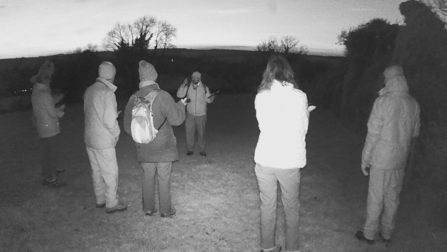Nothing quite matches the atmosphere of a night-time walk, particularly when you are searching for some of the most mysterious and misunderstood animals on the planet. With the expert guidance of a seasoned ecologist, Gareth Harris, a few wide-eyed local villagers – myself included – were able to experience a completely alien ecological quirk that has been on display every night across the world for almost 50 million years.
Bats are highly sophisticated and criminally acrobatic animals, and they are specialist night-time hunters. They have developed a system called echolocation that allows them to determine the location and size of an object by emitting high-frequency ultrasonic “clicks” – through their mouths or noses – and listening to their unique echoes. 18 species of bat are found in Britain, all of which are insectivorous, and they all help control the otherwise overwhelming populations of mosquitos and moths that would spread diseases and decimate our crops.
It is a criminal offense to disturb a wild bat (unless licensed to do so by the Statutory Nature Conservation Organisation) so these calls are one of the most effective ways of distinguishing between the different species. However, we can’t hear these calls, which is why one of the first things that Gareth did when we met at the windswept car park of Coombe Bissett Down nature reserve was hand us all a bat detector: the most commonly used form of detector, called a heterodyne, which transforms the ultrasonic calls of bats into sounds we can hear. Within half an hour of walking leisurely through the darkness, the static buzzing of our detectors erupted into rapid gunfire – a unique pattern of ‘claps’, ‘smacks’, ‘clops’ and ‘slaps’ – as a bat flew overhead. The differing patterns and frequencies of these ultrasonic pulses are unique to each species, and we were fortunate to encounter six.


